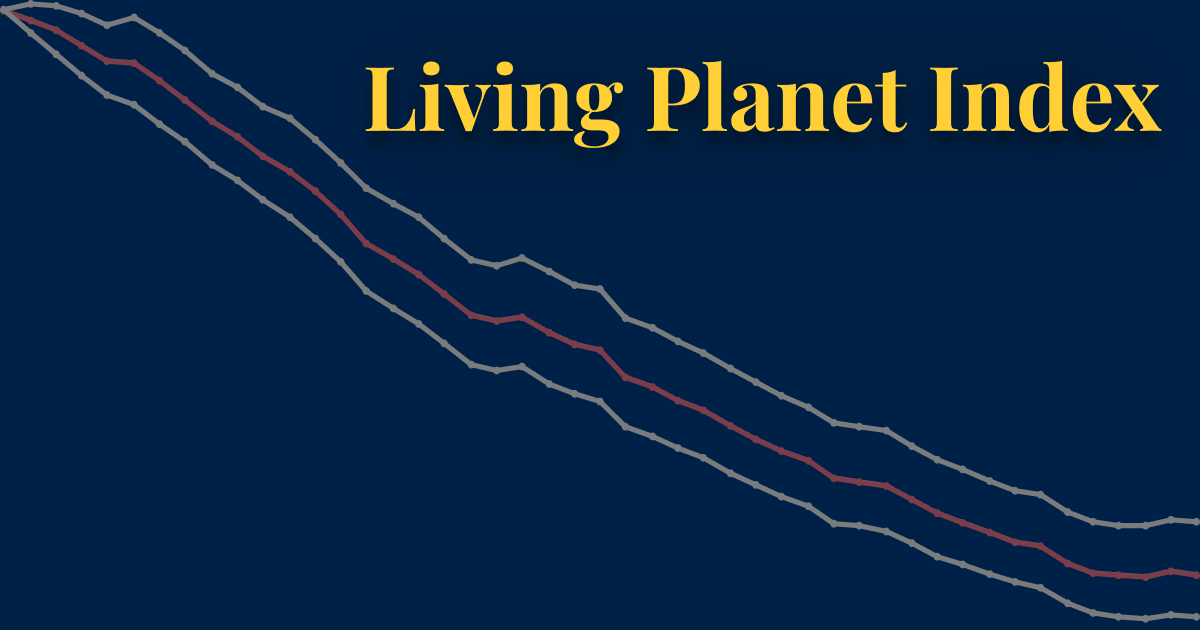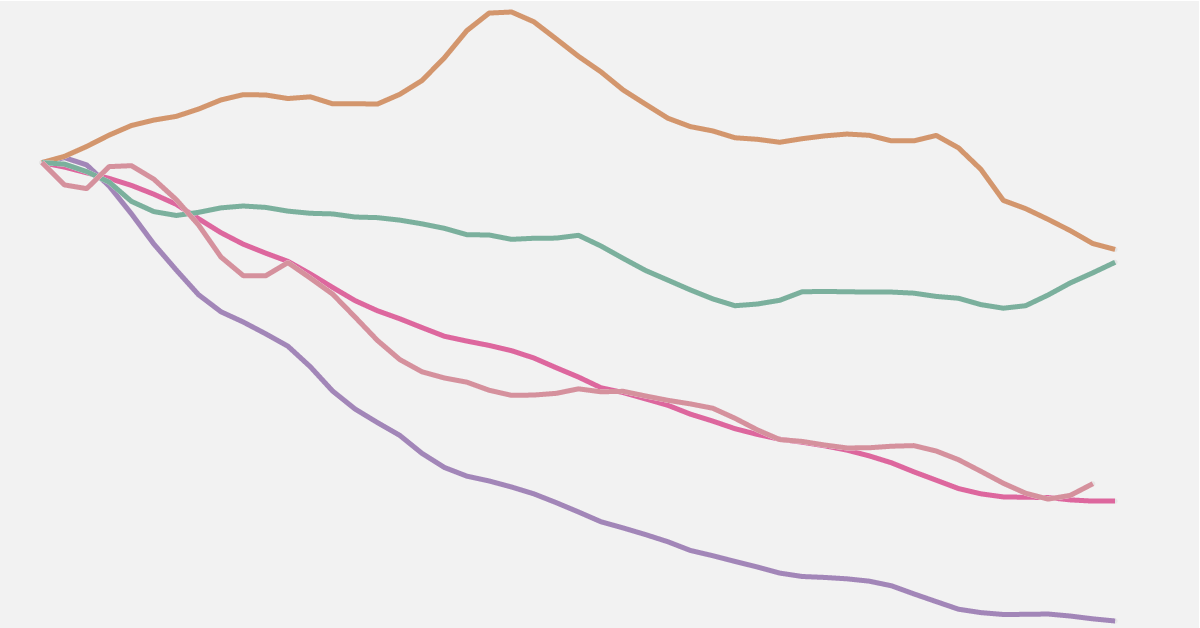Living Planet Index by region

What you should know about this indicator
- The Living Planet Index summarizes the average change in population size of tens of thousands of studied animal populations. It distills this change into a single number, representing the average change in animal populations since 1970.
- The Living Planet Index aggregates observations on changes in population size, and similar metrics, across tens of thousands of animal populations.
- Its 2022 report included figures across 30,000 wildlife populations. This captures everything from frogs to elephant species, rhinos to owls, from every continent on Earth.
Related research and writing
Frequently Asked Questions
What does the Living Planet Index (LPI) measure?
The Living Planet Index (LPI) provides a measure of wildlife abundance. It measures the average relative decline in population size since 1970 across a wide range of species.
What does the Living Planet Index (LPI) not measure?
The Living Planet Index does not measure:
- Number of species lost
- Number of populations or individuals that have been lost
- Number or percentage of species or populations that are declining
- Number of extinctions
What types of species are included?
Only vertebrate species are included in the LPI: this includes mammals, birds, reptiles, amphibians and fish. Only a small percentage (8%) of known species in these groups are included, and only some populations of these species are represented in the LPI.
Although it is one of the most comprehensive datasets for monitoring biodiversity trends, the LPI still only captures a small sample of global biodiversity. For example, insects, corals, fungi and plants are not included.
How many species does it cover? What is the geographical range of this coverage?
In its latest report, published in 2022, 31,821 populations across 5,230 species were included. It includes species and populations across all continents. However, there is a geographic bias in the data, with areas with higher levels of biodiversity monitoring, such as North America and Europe being overrepresented, and areas where biodiversity is richest, like the tropical regions, being underrepresented.
Where does the data for the LPI come from?
The underlying data for the LPI comes from a combination of published scientific articles, online databases and government reports. To be included, data points must contain a time series of vertebrate populations spanning any number of years from 1970 onwards.
What does the LPI show?
The latest results from the LPI indicate an average decline in the studied wildlife populations of 69% between 1970 and 2018.
Note that this does not mean that we have lost 69% of wildlife over this period. For a clear example of why this is the wrong conclusion, and how the LPI is calculated, see our example here.
How sensitive is the LPI to outliers?
The impact of extreme population declines and increases on the calculation of the global LPI (Living Planet Index) has been tested by removing these outliers from the dataset. Although there were slight variations in the results, the overall trend of the global LPI remained very similar, suggesting that extreme declines and increases do not significantly influence the trend of the index.
Sources and processing
This data is based on the following sources
How we process data at Our World in Data
All data and visualizations on Our World in Data rely on data sourced from one or several original data providers. Preparing this original data involves several processing steps. Depending on the data, this can include standardizing country names and world region definitions, converting units, calculating derived indicators such as per capita measures, as well as adding or adapting metadata such as the name or the description given to an indicator.
At the link below you can find a detailed description of the structure of our data pipeline, including links to all the code used to prepare data across Our World in Data.
Reuse this work
- All data produced by third-party providers and made available by Our World in Data are subject to the license terms from the original providers. Our work would not be possible without the data providers we rely on, so we ask you to always cite them appropriately (see below). This is crucial to allow data providers to continue doing their work, enhancing, maintaining and updating valuable data.
- All data, visualizations, and code produced by Our World in Data are completely open access under the Creative Commons BY license. You have the permission to use, distribute, and reproduce these in any medium, provided the source and authors are credited.
Citations
How to cite this page
To cite this page overall, including any descriptions, FAQs or explanations of the data authored by Our World in Data, please use the following citation:
“Data Page: Living Planet Index by region”, part of the following publication: Hannah Ritchie, Fiona Spooner and Max Roser (2022) - “Biodiversity”. Data adapted from World Wildlife Fund (WWF) and Zoological Society of London. Retrieved from https://ourworldindata.org/grapher/living-planet-index-by-region [online resource]How to cite this data
In-line citationIf you have limited space (e.g. in data visualizations), you can use this abbreviated in-line citation:
World Wildlife Fund (WWF) and Zoological Society of London (2022) – processed by Our World in DataFull citation
World Wildlife Fund (WWF) and Zoological Society of London (2022) – processed by Our World in Data. “Living Planet Index by region – WWF and Zoological Society of London – Zoological Society of London” [dataset]. World Wildlife Fund (WWF) and Zoological Society of London, “Zoological Society of London” [original data]. Retrieved August 21, 2024 from https://ourworldindata.org/grapher/living-planet-index-by-region


